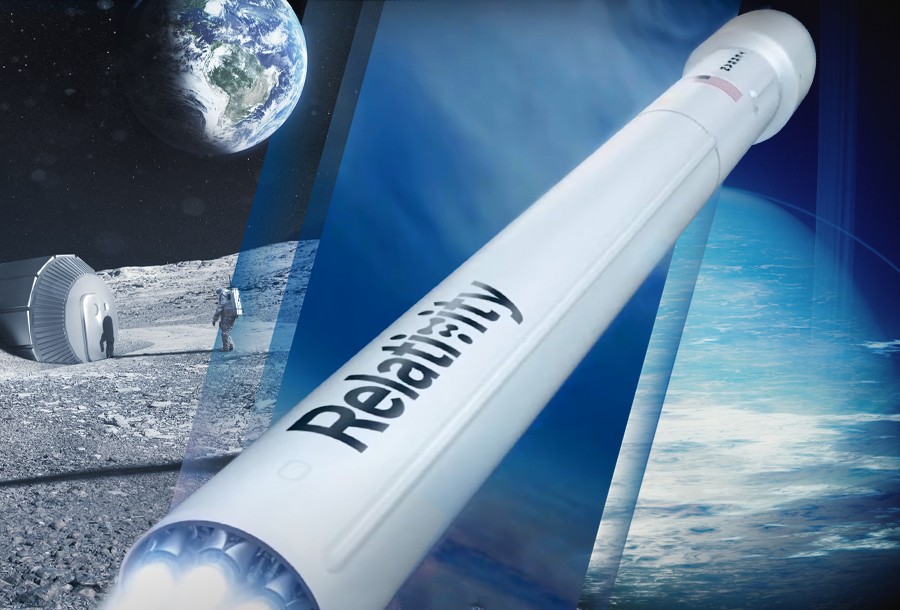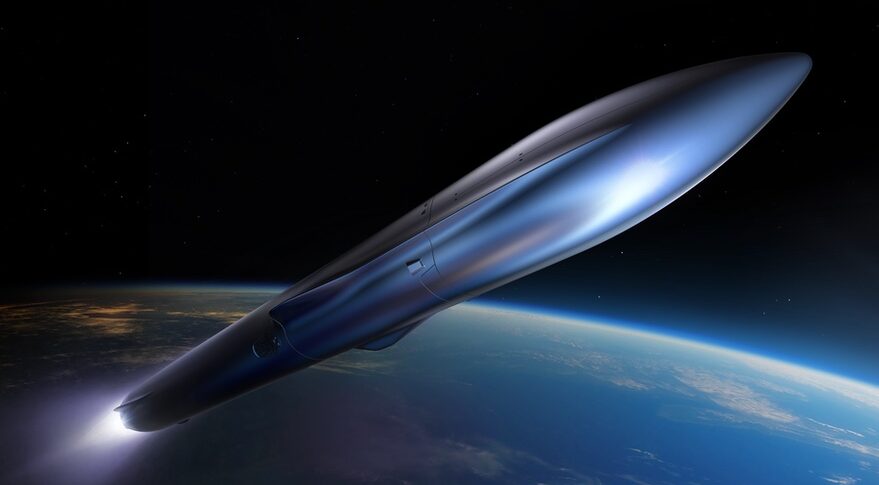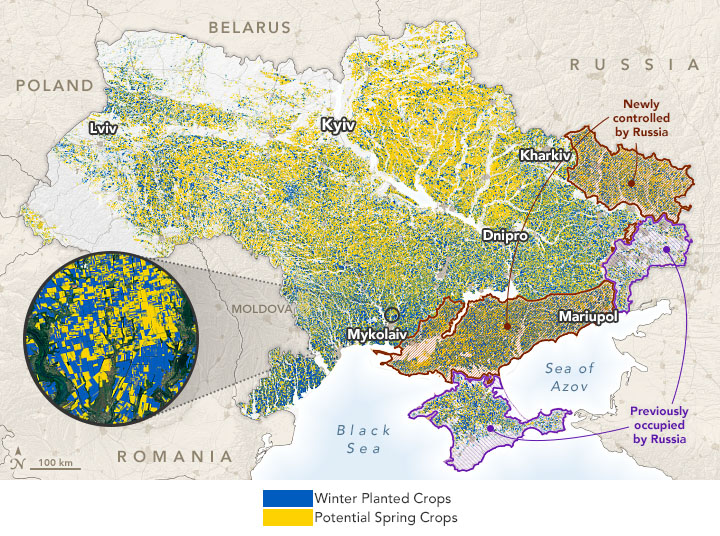Selection of the most interesting space news for breakfast: L3Harris infrared technology will simplify the detection of air defense systems and improve the quality of satellite images of the battlefield, and we tell you about the most interesting facts about asteroids and celestial events in July.

Content
- China holds casting of space missions
- Where will NASA set up its moon base?
- Celestial events of July 2022
- Atlas V to make second launch attempt with USSF-12 mission
- Relativity to Launch Satellites for OneWeb’s Gen-2 Constellation
- Kepler books orbital transfer vehicle for next launch
- House appropriators reduce proposed budget for FAA commercial space office
- L3Harris infrared space tech will enhance battlefield imagery + missile defense detection
- How war affects grain cultivation: Satellite data
- Satellites watch record-breaking wildfires burn across Alaska
- Chinese boffins suggest launching nuclear Neptune orbiter in 2030
- 12 interesting facts about asteroids
China holds casting of space missions
The Chinese Academy of Sciences is preparing to select space missions that will be implemented under the third Strategic Priorities Program (also known as the New Horizons program). Their launch will take place in the period from 2026 to 2030 and will be timed to coincide with the next five-year plan. In total, the Chinese Academy of Sciences is considering 13 projects in the following four fields: astronomy and astrophysics, exoplanets, heliophysics, planetary research.
Where will NASA set up its moon base?
NASA aims to set up a crewed outpost near the moon’s south pole, calling it “our first foothold on the lunar frontier.”
The ingredients for that encampment, known as Artemis Base Camp, are an unpressurized rover to transport suited astronauts around the site; a pressurized rover to enable long-duration treks away from the outpost; and the surface habitat itself, which will be capable of housing four humans at a time.
This home-away-from-home demands a lot of infrastructure such as communications, power, radiation shielding, waste disposal and storage space, too. All of these domicile niceties, NASA planners say, are requirements for a sustained human presence on the moon that can be revisited and built upon over the coming decades.
Celestial events of July 2022
July is the middle of summer, still not the best time for astronomical observations in our latitudes. Only by the end of the month the nights become long enough and there is time to consider weak celestial objects. At the same time, the first active summer meteor showers begin to operate. This year, at this time, the mysterious “asteroid comet” Wilson-Harrington will approach us and the relatively bright comet PanSTARRS will continue to increase its brilliance, but at the same time its declination will decrease. On July 13, there is a “supermoon” — the closest approach of the Moon to the Earth throughout the year.
Atlas V to make second launch attempt with USSF-12 mission
United Launch Alliance will now deploy a pair of Space Force technology demonstration payloads using its Atlas V rocket no earlier than Friday, July 1. The USSF-12 mission was due to lift off from Cape Canaveral on Thursday, but persisting lightning storms in the area prevented a launch attempt. The USSF-12 mission is now due for liftoff during an identical two-hour window that opens at 6:00 PM EDT (22:00 UTC) on Friday.
Market News

Relativity to Launch Satellites for OneWeb’s Gen-2 Constellation
OneWeb signed a launch contract with Relativity Space to launch satellites in its Gen 2 network on the new Terran R rocket. The deal, announced Thursday, marks a win for Relativity Space before the first flight of its Terran 1 vehicle.
Relativity Space said launches will start in 2025. Financial terms of the agreement were not disclosed, but the companies described it as “multi-year, multi-launch” agreement. OneWeb confirmed to Via Satellite that the agreement covers “a portion” of the Gen 2 constellation.
Kepler books orbital transfer vehicle for next launch
Canada’s Kepler Communications said June 30 it plans to use D-Orbit’s orbital transfer vehicle for the next two satellites in its low-data-rate constellation.
The Kepler-20 and Kepler-21 satellites will be boarded on the Italian space logistics company’s ION Satellite Carrier, which has booked a flight in the first quarter of 2023 on a rocket the companies declined to disclose.
House appropriators reduce proposed budget for FAA commercial space office
House appropriators eliminated most of a proposed budget increase for the Federal Aviation Administration’s commercial space transportation office while also directing the agency on spaceports and cooperation with another agency on spaceflight investigations.
The House Appropriations Committee approved June 30 its version of a transportation and housing and urban development spending bill for fiscal year 2023. The bill funds several agencies, including the FAA.
L3Harris infrared space tech will enhance battlefield imagery + missile defense detection
A L3Harris Technologies (NYSE:LHX) infrared instrument will significantly improve the ability to capture high-resolution imagery and other important battlefield information from space – a critical capability for the nation’s future missile defense efforts.
L3Harris is providing the instrument as part of a wide-field-of-view satellite that also will help inform future space-based missile defense missions and architectures. The satellite will be positioned 22,000 miles from Earth, enabling the infrared system to see a wide swath and patrol a large area for potential missile launches.
Interesting

How war affects grain cultivation: Satellite data
Scientists from the NASA Harvest program monitor the situation with grain harvesting in Ukraine using satellites. They note that with the start of the war, one of the world’s main food exporters may lose a significant part of its harvest.
Harvest is a NASA program aimed at creating a system for satellite monitoring of grain cultivation. The scientists involved in it collect a variety of economic, social and environmental data that can tell about the possibility of providing humanity with products. But their main source of information is satellite images.
Now Harvest and its head Inbal Becker-Reshef use satellites of the American company Planet Labs and European Sentinel-2 devices. And their main attention is focused on the situation in Ukraine. It supplies 46% of sunflower oil, 9% of wheat, 17% of barley and 12% of corn to the world market.
Satellites watch record-breaking wildfires burn across Alaska
A hot, dry start to summer has sparked a record number of wildfires in southern Alaska, and weather satellites are tracking the development of the blazes from space. The National Oceanic and Atmospheric
Administration’s (NOAA) geostationary satellites have captured striking images of the fires burning across south-central and southwestern Alaska since early June. Lightning strikes from thunderstorms are sparking these early-season wildfires, which are then feeding on dry vegetation from a mild winter, according to a statement from NOAA.
Chinese boffins suggest launching nuclear Neptune orbiter in 2030
Scientists at top universities in China propose sending a spacecraft powered by nuclear fission to orbit Neptune – the outermost planet in our solar system – in 2030.
The challenges involved are considerable. The outer solar system is cold, dark, and cruel. Spacecraft flying far from the Sun cannot rely on solar power, and need other sources of energy to maintain steady orbits and keep their instruments from freezing.
Radioisotope thermoelectric generators (RTGs) have been employed on more than 30 missions to provide spacecraft with heat and fuel. They work by converting heat from the radioactive decay of a suitable fuel, such as plutonium-238, into electricity.
12 interesting facts about asteroids
In 2016, the UN General Assembly proclaimed June 30 as international Asteroid Day. The date was chosen not by chance. On June 30, 1908, an explosion of a celestial body occurred over Siberia, which became known as the Tunguska meteorite. This is the largest such an event ever documented by mankind. If the Tunguska meteorite had exploded over a large city, the death toll could have been measured in thousands. One of the key goals of Asteroid Day is to inform the public about the dangers of such events and find ways to prevent them. On the occasion of Asteroid Day, we have compiled a selection of 12 interesting facts about these celestial bodies.
Follow us on Twitter to get the most interesting space news in time
https://twitter.com/ust_magazine
